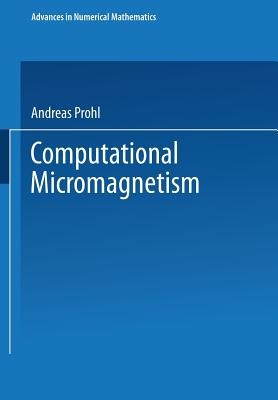
- We will send in 10–14 business days.
- Author: Andreas Prohl
- Publisher: Vieweg+Teubner Verlag
- Year: 2001
- Pages: 304
- ISBN-10: 3519003589
- ISBN-13: 9783519003588
- Format: 17 x 24.4 x 1.7 cm, minkšti viršeliai
- Language: English
- SAVE -10% with code: EXTRA
Reviews
Description
Ferromagnetic materials are widely used as recording media.
Their magnetic patterns are described by the well-accepted model of Landau and Lifshitz. Over the last years, different strategies habe been developed to tackle the related non-convex minimization problem: direct minimization, convexification, and relaxation by using Young measures. Nonstationary effects are considered in the extended models of Landau, Lifshitz and Gilbert for (electrically conducting) ferromagnets.
The objective of this monograph is a numerical analysis of these models. Part I discusses convergence behavior of different finite element schemes for solving the stationary problem. Part II deals with numerical analyses of different penalization/projection strategies in nonstationary micromagnetism; it closes with a chapter on nematic liquid crystals to show applicability of these new methods to further applications.
EXTRA 10 % discount with code: EXTRA
The promotion ends in 22d.06:10:35
The discount code is valid when purchasing from 10 €. Discounts do not stack.
- Author: Andreas Prohl
- Publisher: Vieweg+Teubner Verlag
- Year: 2001
- Pages: 304
- ISBN-10: 3519003589
- ISBN-13: 9783519003588
- Format: 17 x 24.4 x 1.7 cm, minkšti viršeliai
- Language: English English
Ferromagnetic materials are widely used as recording media.
Their magnetic patterns are described by the well-accepted model of Landau and Lifshitz. Over the last years, different strategies habe been developed to tackle the related non-convex minimization problem: direct minimization, convexification, and relaxation by using Young measures. Nonstationary effects are considered in the extended models of Landau, Lifshitz and Gilbert for (electrically conducting) ferromagnets.
The objective of this monograph is a numerical analysis of these models. Part I discusses convergence behavior of different finite element schemes for solving the stationary problem. Part II deals with numerical analyses of different penalization/projection strategies in nonstationary micromagnetism; it closes with a chapter on nematic liquid crystals to show applicability of these new methods to further applications.


Reviews